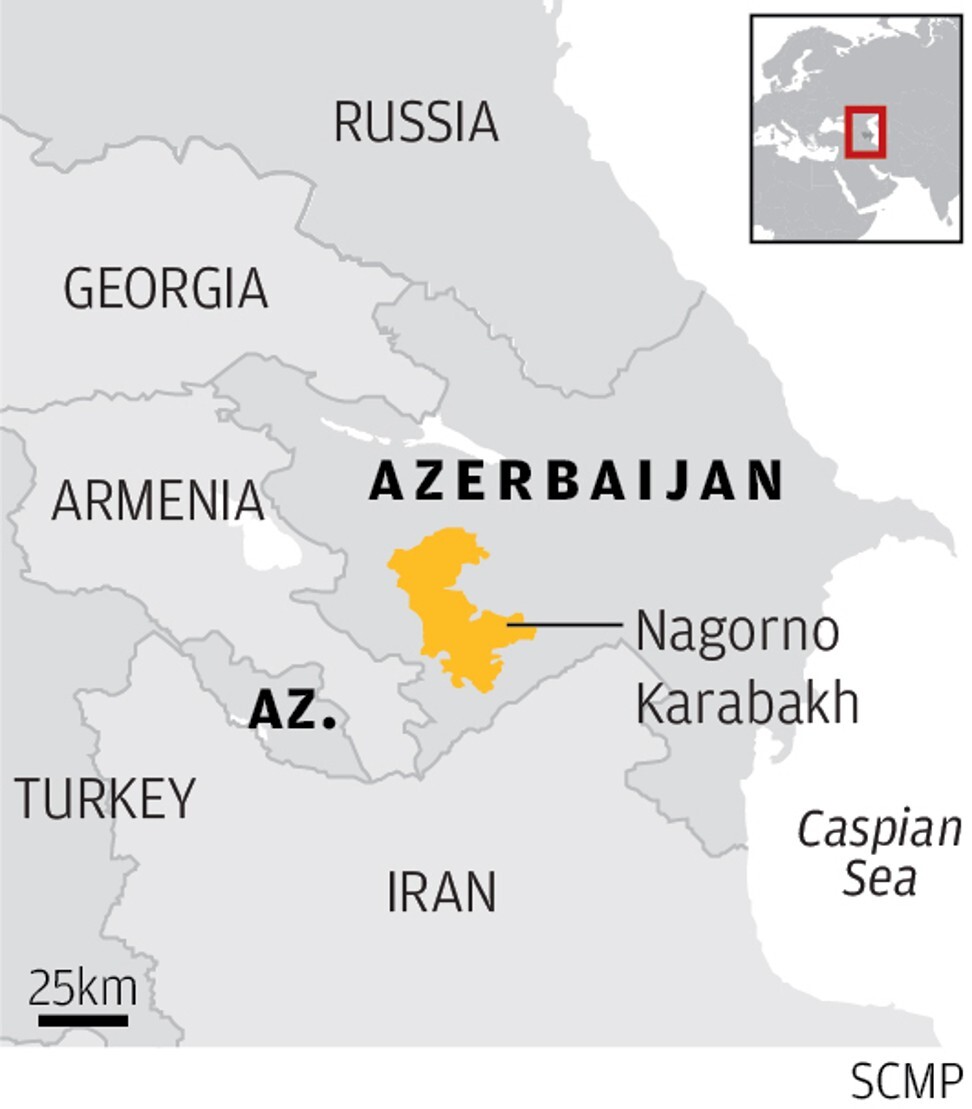
In Nagorno-Karabakh, drones rain death but won’t bring quick end to war
- As both Armenia and Azerbaijan double down on their brutality in the conflict, the Azeris have introduced a dangerous new element
- The drones, supplied by Turkey and Israel, have allowed Baku to increase its power-projection capability, removing limits to its aggression
Nagorno-Karabakh conflict offers insight into the new art of war
The Nagorno-Karabakh conflict is different. Azerbaijan has deployed Turkish military drones and Israeli loitering munitions (otherwise known as suicide drones) at medium range – in other words, in the middle of a fight, as conventional air power – inducing fear in the opposing camp, but paradoxically rallying defenders to the cause.
In this regard, drones represent a dangerous new trend – a small state that acquires them in numbers and deploys them as a sort of expanded air force can significantly increase its power-projection capability. This removes some limits to its aggression.
As has happened with cyberweapons, drones have ended the monopoly of rich nations in visiting violence on their foes. For countries such as Azerbaijan, which only has a few fighter jets, inexpensive drones have dangerously altered the perception that their military capabilities are limited, leading to greater aggression.
The promise of warfare without risk increases the chances of conflict escalation. In fact, Azeri drones breaching Armenian airspace could have ignited the first Unmanned Aerial Vehicle (UAV)-induced casus belli. Baku’s use of a “drone air force” has also dramatically changed the equation: It has tilted a marginal military power imbalance into a possibly decisive one, putting Yerevan on its heels.
Why possibly? While effective so far, the use of drones in an all-out conflict between two armies has thrown up some unexpected results. While combat drones are generally bad news in any conflict, they are easy prey for short-range air defence systems. The number of drones Armenia has claimed to have shot down is set to increase in the coming weeks. As its armed forces overcome their initial drone-induced shock, the effectiveness of UAVs will be cut, although not completely lost.
Questions have also arisen because of the large numbers of armour lost. Both sides have lost a number of tanks, and the drone menace has increased the need for electronic warfare systems and short-range anti-aerial defence for armoured formations. But poor training and tactics have contributed to losses. One well-viewed video from the conflict shows a column of Azerbaijani tanks crossing open ground slowly while grouped closely together being picked off easily by Armenian artillery.
Taking a step back, several big-picture developments can also be divined from this faraway conflict.

02:31
Deadly clashes between Armenia and Azerbaijan reignite over Nagorno-Karabakh
Next, attention should be focused on the evolution of drone warfare. The next step is probably the introduction of UAV swarms that saturate air-defence systems. Drone swarms have not appeared in the Nagorno-Karabakh conflict, as they are not yet available on the market. Nevertheless, Chinese CH-901 and US Coyote tube-launched drones are already moving from the testing phase to production.
Armenia and Azerbaijan accuse each other of breaking ceasefire
One notion that must be consigned to the dust heap is the Cold War mentality that technological development has reduced the propensity for war. The other is the widespread adoption – among a generation of warriors or diplomats for whom “precision strikes” are an article of faith – of the idea that technology can deliver a rapid, bloodless and decisive victory.
Too many times, scientific developments, considered a silver bullet, have become a poisoned chalice instead.
Dr Alessandro Arduino is principal research fellow at the Middle East Institute at the National University of Singapore, specialising in the roles played by private military contractors and technology in modern warfare.


